The island of Santo Stefano, in Italy, belonging to the Pontine Islands archipelago, has been for 170 years the seat of a penal colony, which lodged many prisoners, both illustrious and humble, but all victim of hardest conditions of detainment and often of violence, which brought some of them to the death.
The
Pontine Islands
The Pontine Islands have a volcanic origin, since December 18th,
1934 they belong to the province of Latina (previously they made
part of Naples province) and are divided into two communes, the
biggest is Ponza, including the island bearing the same name with
3,107 inhabitants on a surface of 7.5 km² (2.9 sq mi) and
the uninhabited islands of Palmarola (1 km²= 0.39 sq mi),
Zannone (0.9 km²= 0.35 sq mi) and Gavi (0.24 km²= 0.09
sq mi). The other commune in the archipelago is Ventotene, including
the island bearing the
same name (website)
with 708 inhabitants in 1.25 km² (0.48 sq mi), and the uninhabited
island of Santo Stefano (0.29 km²= 0.11 sq mi).
The Pontine Islands were used as a place of confinement already
in the Roman age, and in particular Ventotene (then named Pandataria)
hosted for five years Julia the Elder,
the daughter of the emperor Augustus, sent in exile by her father
in 2 BCE, while her mother Scribonia, although having asked to
follow her daughter, wasn't satisfied. Later Julia's daughter,
Agrippina the Elder, mother of the
emperor-to-be Caligula, was sent by Tiberius on the island, where
she starved herself to death. Years after Octavia,
Nero's wife, was sent into exile in 62 CE, and shortly after,
when she was twenty, her husband himself ordered to kill her.
Finally Pandataria was the compelled dwelling of Flavia
Domitilla, niece of the emperors Titus and Domitian and grand-daughter
of Vespasian, interned since being suspected to be Christian and
later proclaimed saint.
The Pontine Islands, known as the “Farnesian Islands”,
were part of a vast feudal patrimony, attributed in 1738, by virtue
of international treaties, to King Charles VII of Bourbon, and
when in 1759 he became King of Spain, he left the crown of Naples
and the pertinent assets to his son, who became king Ferdinand
IV. The islands of the archipelago were therefore part of the
“allodial assets”, that is, they were part of the personal
patrimony of the reigning house of Bourbon, and fell under the
jurisdiction of the Giunta degli Allodiali (Allodial Council),
created in 1768, and turned in 1790 into the Intendenza Generale
degli Stati Allodiali (General Intendancy of the Allodial States).
In 18th century Ferdinand
IV of Bourbon, the king of Naples, decided to repopulate the
Pontines, including Santo Stefano, in the beginning, in 1768,
with two hundred convicts who had the task to build the houses,
and some prisoner women, with which they had to form families;
later on the island some families from Torre del Greco and Ischia,
in particular from Forio and Serrara, but also from Naples and
from the Cilento.
In the twentieth century the fascist regime transformed Ventotene
into one of the places of confinement for political opponents.






Santo
Stefano Island
Santo Stefano is the more eastern island of the archipelago, and
has a 2 km (1.24 mi) circumference, with east-west diameter of
750 m (0.43 mi), north-south diameter of 500 m (0.31 mi) and maximum
height of 68 m (223 ft). The coastline is steep, except for the
north-west side, and on it three promontories can be found: cape
Falcone to the north, cape Romanella to the north-west and cape
Spassaro to the south-west. The vegetation is mainly composed
by fig trees, agaves and Indian figs.
The island hosted a lizard subspecies, the Santo Stefano lizard
(Podarcis siculus sanctistephani, Mertens, 1926), which
went probably extinct in the period in which the penitentiary
was closed, due to feral cats and snakes, and to an unknown pathogen.
According to Ptolemy the island was named Parténope,
while other names of the Roman age were Palmosa, Dommo
Stephane and Borca, in the Middle Ages Maldiventre
(belly ache), Bentilem and Betente, and the
current name could be due to a monastery dedicated to Saint Stephen.
The island was colonized many times, but at last it remained deserted
for the raids of the Saracen pirates, which used it as a starting
point for their incursions. The Neapolitan seventeenth-century
chronicler Innocenzo Fuidoro (Vincenzo D'Onofrio) writes of two
expeditions to Ventotene, ended with the capture of pirate boats,
the seizure of Saracen as slaves, and the liberation of Christian
slaves by the Neapolitans (1660) and by the Florentines (1664).
The
Panopticon
The use of Santo
Stefano as a jail dates back to the Bourbon age: the king of Naples
Ferdinand IV ordered a penitentiary to be built there, designed
between 1792 and 1793 on the model of US penitentiaries by the
architect Francesco Carpi, a pupil of Vanvitelli,
who also planned public buildings not having prison purpose on
Ventotene island.
For reasons of economy, the construction was entrusted to prisoners
sentenced to hard-labor. Convicts with sentences of less than
three years were chosen, in order to avoid the temptation to escape.
The solution was successful: between the end of 1793 and the summer
of 1795, the foundations, the ground floor, the first floor and
the military avant-corps had been completed, and construction
of the chapel in the center of the courtyard and the second floor
had begun.
The overcrowding of Neapolitan prisons, probably a contributing
cause of an epidemic, pushed to accelerate the construction and
to plan a third floor, which between 1797 and 1798 was almost
finished.
According to a 1855 text, by Giuseppe Tricoli, the same Carpi
later on would have been secluded there "by a political
crime", or even would have died there, but in the comprehensive
study by Amelia Pugliese is highlighted how in reality in the
period of his presumed detainment Carpi was free and carried out
his charge of civil employee. The troops quartered in Ponza, leaded
by Luigi Verneau and by the same
Francesco Carpi, joined the Republican Government of Naples. Vernau,
after the failed libertarian revolution against the Bourbons in
Naples, was hanged on the gallows
in Ponza.
The penitentiary had been designed according to a panoptical
model, which considered a total and continuous visual control
of the prisoners, to reach the "domination of the mind
upon another mind", theorized in the treatise "Panopticon"
(1787), by the English philosopher Jeremy
Bentham (1748-1832), helped by his brother Samuel
Bentham (1757-1831), engineer.
The circular structure developped
itself around a courtyard, which
had to recall the circles of Dante's Inferno. In the courtyard
the corporal punishment took place, being proper tortures which,
for admonishment, occurred under everybody's eyes, just for its
circular shape.
In correspondence with the entrance the circular structure was
interrupted by a rectangular building, with two towers facing
outside and a terrace with two sentry-boxes inwards. On the upper
floors of this building the surgeon, two doctors, the pharmacist,
the nurses and the watchmen were hosted. On the ground floor the
management, administration and matriculation offices, warehouses
for clothing and food, and a tavern, run by a private citizen
and also open to the inhabitants of Ventotene were placed.
The penitentiary was opened on September 26th,
1795 with the first 200 prisoners, which soon became 600, the
number estimated at full capacity, and then 900, arranged in 99
cells, all identical, each one
with a size of 4.50 x 2.20 m (14.24 x 6.96 ft).
At the entrance of the penitentiary Carpi got a Latin sentence
written as a warning: "Donec sancta Themis scelerum tot
monstra catenis victa tenet, stat res, stat tibi tuta domus"
meaning: as long as the blessed Themis (a personification of justice
for the ancient Greeks) will keep so many monsters shackled, the
State and your house will be in safety.










The
first political prisoners
On January 23rd, 1799, the Neapolitan Republic was proclaimed,
protected by the French, which in June of the same year was overwhelmed
by the monarchic restoration, supported by the Sanfedisti of Cardinal
Ruffo and by several European states. Many republicans were imprisoned,
including on the island of Santo Stefano, and many others were
executed. Among those imprisoned was Raffaele Settembrini, Luigi's
father, who spent fourteen months there. General Enrico Michele
L'Aurora, who defended Castel dell'Ovo, the last bastion in defense
of the republic, also spent 23 months in Santo Stefano, which
he described as "two years of iron and misery.".
The
"Ricordanze" by Luigi Settembrini
Besides the many political and common prisoners, in Santo Stefano
also Luigi Settembrini (1813-1876)
was secluded: the patriot and man of letters was imprisoned there
in 1851, to serve a life imprisonment sentence, converted into
exile in 1859, at the ewe of the downfall of Bourbons' rule. Settembrini
in his work "Ricordanze
della mia vita" (Remembrances of My Life) so describes
the island: "With difficulty you can make landfall there,
and only on small boats, because it is full of rocks around it,
and the narrow strait that separates
it from Ventotene is always rough and loud. It’s beaten by
all the winds, which bring there on the same day the harshness,
the cosiness and the heat of all seasons". Settembrini then
describes the penitentiary: "Let us go inside this tomb where
about eight hundred living men are buried: we will see pains that
the world does not know and can never imagine: we will see men
turned into beasts, who have fallen to the bottom of human abjection:
and from this abyss of pain and crimes we will raise our eyes
and our voice to God to console those who suffer, and advise those
who make them suffer".
Settembrini continues: "Anyone approaching Santo Stefano
from the sea sees the penitentiary
towering on the top of the hill, which for its almost circular
shape seems a gigantic wheel of cheese placed on the grass. The
great outer wall, painted white and without windows, is evenly
scattered with black specks, which are holes in the form of very
narrow embrasures, allowing only the air to pass. To land on the
island you have to jump down a slippery
rock covered with seaweed. Beginning to ascend a steep and
coarse lane, first of all you
find a broad cave, in which
the penitentiary’s superintendent uses to store the supplies;
then coming up you can see the hillside industriously cultivated."









And again: "Imagine
to see a very wide open theatre, painted in yellow, with three
tiers of boxes made by arches, which are the three floors of the
prisoners' cells: imagine in that place on the stage there's a
big wall, like a boundless curtain, in front of which stands a
little open space enclosed by a fence and a ditch; imagine in
the middle of the wall there's a covered balcony,
which communicates with the outward building, on which always
stands a sentry, watching and dominating all around this theater;
and higher up in the big curtain of this wall there are many loopholes
in every place. So you'll have an idea of this wide building,
whose shape is wider than half-circle, with a vast courtyard in
its middle, and in the middle of the courtyard a small church
lies having an hexagonal shape, enclosed all around by glass panes.
The courtyard is paved with cobblestones, two mouths of reservoir
and three stone bases, with iron bars supporting lamps lie there.
The paving and the reservoirs have been made since few years:
before in the courtyard there were nettles and ditches, where
the prisoners went to drink, and often competed with their knives
to quench their thirst in those fetid puddles."
Settembini estimates that twelve hundred prisoners had died in
the prison in twenty years, a thousand of whom were killed by
comrades or jailers. (Parte
seconda - 1849-1859 - Gli ergastolani)
Athos
Lisa
The communist leader Athos Lisa, imprisoned in Santo Stefano,
so described the penitentiary: "The inside of the penitentiary
looked to me as cold, severe as a tombstone ... My mind ran to
the Roman amphitheaters and their history, because the hell, in
a penitentiary, has the shape of an amphitheater. The cells were
built along a circumference of which I couldn't estimate the dimension.
Some of the cells were on the ground floor, others on the first
floor. A completely uncovered balcony ranged on all the circumference
made both day and night surveillance easier ... In the center
of the courtyard, risen above the ground, the church overlooked,
surrounded by a terrace from which the prisoners could be watched
during their exercise hour. Below the church, the small yards
for the so-named walk rose. All this formed a kind of monumental
unit: at the top the church stood, built with glass walls to allow
the prisoners to "attend" the mass not going out the
cells; around the church there was a gallery for the surveillance,
and below it the small yards forming a circular halo."
Athos Lisa writes that one day he was walking in his cell in Santo
Stefano, when the door opened, and the jailer burst in. "What
are you doing?". “I walk.” Lisa replied.
“But you snap your fingers.” he added. "Well?".
"Well that's not allowed.". (p. 24)











Illustrious
prisoners
The anarchist
Gaetano Bresci from Prato, near Florence,
(see my webpage on him), was secluded
and then killed in Santo Stefano, sentenced to life imprisonment
for the assassination of the king of Italy Umberto I. Bresci was
murdered on May 22nd 1901, few months after his transfer
in the penitentiary of the island.
Another victim of Santo Stefano was the young Communist militant
Rocco Pugliese (see my webpage
on him), who died on October 17th 1930, murdered by the jailers,
even if, according to the official version, he was suffocated
by the food or, according to an other version, even less credible,
suicided.
Another illustrious prisoner was Silvio
Spaventa and also two notorious highwaymen, Giuseppe
Musolino from Calabria and Carmine Crocco
from Basilicata were secluded in Santo Stefano.
The fascist regime used Santo Stefano as a place of detention
for the political opponents: between them, in addition to the
above mentioned Rocco Pugliese, there was Sandro
Pertini, who was President of the Italian Republic from 1978
to 1985. Moreover in Santo Stefano were imprisoned the Communist
leaders Umberto Terracini, Mauro
Scoccimarro, Athos Lisa, and the Socialist Giuseppe
Romita (who later was Minister of the Republic), the Anarchist
bandit Sante Pollastro and Guido
Sola, a young Communist from Biella, later sent
to die in the sanatorium of Pianosa island.
Even Ponza and Ventotene were places of detention and internment
for the anti-fascists, and the name of the latter is still renowned
for the Ventotene
Manifesto, written in 1941 by Altiero
Spinelli and Ernesto Rossi,
interned on the island, which is considered a founding document
of the European Union to come.
Other antifascists secluded in the Pontines were the Communists
Giorgio Amendola, Luigi
Longo, Walter Audisio, Pietro
Secchia, Camilla Ravera, Giuseppe
Di Vittorio, Giovanni Roveda and
Eugenio Curiel, the Action Party leader
Riccardo Bauer and the Socialist Lelio
Basso.












The
tortures
The penitentiaries
of the fascist age were the scene of tortures and oppression inflicted
to the prisoners, which often ended with the death of the victims,
entirely at the mercy of the brutality of their jailers, sure
of their absolute impunity. Often their bodies were made disappear
or were buried in an anonymous way and usually their families
weren't even informed.
One of the most common tortures imposed in case of protests or
insubordination was the so-called "Sant'Antonio",
a word derived from the Naples mafia slang, that consisted in
bursting unexpected into the cell, wrapping the victim up with
a blanket, and then beating him hard with kicks, punches, or with
the heavy keys of the cells. The blanket was used in order to
allow the aggressors not to be recognized, to suffocate the screams
of the victims and impeach them to react, and also for not leaving
traces on the body of the target of the beating, that could testify
about the aggression. According to the Ligurian anarchist Giuseppe Mariani, once imprisoned
in Santo Stefano, in the penitentiary during the beatings the
blanket was not used, since the guards, being certain of their
impunity, didn't think they need any precaution.
Rocco Pugliese died in Santo Stefano, strangled or beaten to death
by the jailers; the beating up that caused his death is so described
by Francesco Spezzano "after having thrown a blanket on
his head (...) they beated him to death" and moreover
"his desperate screams were heard for long by his companions
of imprisonment (...) that, locked in the other cells, couldn't
do anything to help him" and then "the emotion
for the barbarous murder was enormous between the prisoners who
made a collection to send a wreath to his funeral".
The death of the prisoners during the beating ups is so described
by Sandro Pertini, secluded in Santo Stefano from 1929 to 1930,
who in a speech of November 19th 1947 to the Constituent Assembly
reminded: "... I speak for personal experience (...).
In jail, Honourable Minister, it happens this: a prisoner is struck;
in consequence of the blows the prisoner dies, and then everybody
worries, and not only the jailers who stroke the prisoner worry,
but also the director, the doctor, the chaplain and all the prison
crew do it. And then they make this: they lay the prisoner bare,
they hang him to the window's grating and they let him be found
hanging this way. The doctor comes and he draws up a medical report
of suicide. This was the end of Bresci. Bresci has been struck
to death, then they hung the corpse to the window's grating of
his cell at Santo Stefano, where I have been a year and half".
Ugoberto Alfassio Grimaldi, quoting testimonies of political
prisoners, writes of Bresci: "That May 22nd
three guards made him the "Santantonio": that is covering
somebody with blankets and sheets and then beating him until his
death; his corpse had been buried, in a place of which remained
no trace in Santo Stefano archives, by two lifers sent purposely
there from an other jail, and then sent immediately away; the
penitentiary's commander had been promoted and the three jailers
had been rewarded".
In the same work he remembers that the murders of political prisoners
in the fascist jails were not isolated examples, as testified
by the cases of Gastone Sozzi
in Perugia jail and of Romolo
Tranquilli, brother of the writer Ignazio Silone, in Procida
jail. The underground edition of the Communist organ l'Unità
dated January 1st, 1929 reports the names of the
communist prisoners died or anyway suffering in the fascist jails.
Also Adriano Ossicini described the
application of the Santantonio in Regina Coeli jail n Rome, during
the fascist dictature.





Between October 1860 and
January 1861 Santo Stefano was the seat of the so-called Republic
of Santo Stefano, a kind of self-managed state started up as a
result of a riot by a group of some hundreds of imprisoned Naples
mafiosos, members of the clan Bella Società Riformata (Fine
Reformed Society). The rebellion had been made easier by the leaving
of the Bourbon garrison stationed in the jail, which had to rush
to the defence of the town of Capua, put under siege by the troups
of Garibaldi.
The mafiosos gave themselves very strict rules, providing for
death penalty not just for murder, but also for theft or assault
to the prison guards. The republic came to an end after three
months from its birth for the landing of the seamen of the kingdom
of Italy and the consequent surrender, whitout shedding of blood,
of the mutineers. The subsequent trial, in 1866, imposed just
light sentences and many acquittals for the rioters.
The penitentiary was definitely abandoned on February 2nd
1965, and in 1981 on its front gate a plaque
was placed to commemorate the imprisonment of Sandro Pertini and
of the political prisoners secluded in Santo Stefano in its 170
years of "active service".
The
riot of 1943
From 14th
to 18th November, 1943 Santo Stefano
was the scene of another uprising, caused above all by the fear
of death by hunger and thirst, due to the situation of abandonment
of the island after the armistice of 8th September.
Starting from July 1943 Santo Stefano and its guests found themselves
in an even more precarious situation than usual, due to the interruption,
at first partial, and then total, of the supplies, shared with
Ventotene and its inhabitants and confined.
On July 23rd, 1943, an allied air squadron,
made perhaps of four four-engined US planes, jettisoned medium-sized
bombs into the sea, perhaps to get rid of the load left before
landing after a mission, and one of the bombs fell on the prison,
leaving one person injured.
On July 24th, 1943, a British twin-engine
Beaufighter aircraft torpedoed and sank the steamship Santa
Lucia, which connected Naples to the Pontine islands, including
Santo Stefano, which was the only source of supply for the penitentiary,
causing 65 casualties.
After September 8th armistice, the Allies freed the
49 political prisoners, but the 248 ordinary prisoners were left
in the penitentiary, finding themselves abandoned by the rest
of the world and lacking resources, guarded by only 39 jailers.
The food supplies had run out and for the water they could only
rely on rain water, lacking any spring on the island. All the
remaining farm animals were slaughtered, and the food rations
were reduced, integrating them with weeds picked on the island,
but even so the guests of Santo Stefano were on the brink of starvation.
The only escape route that was shown to the inmates was breaking
out of penitentiary. Therefore the riot was not the result of
a long preparation, but a desperate act not to die of hunger and
thirst.
So on November 14th the riot broke out, triggered
by six inmates, including Sante Pollastro and Giuseppe Mariani,
who had not been freed by the allies because he was condemned
for a common crime, the 1921 bombing of the Diana theater in Milan
that caused the massacre of 21 people.
The rioters took the guards hostage, who were taken by surprise,
and anyway reacted by killing one of the inmates, Giuseppe Ligregni.
Later they took hostage also the jail director De Paolis and the
civilians, among which the staffers' families. During the riot
the administrative archive and the prison records were burned.
Not having boats to get massively away, a group of rioters reached
Ventotene with some hostages, with the boat of a supplier, who
had landed on Santo Stefano and was also took hostage. The intention
was to negotiate the supply of a boat to sail to Santo Stefano
and embark the rebels and take them elsewhere. Actually the island
of Procida is clearly visible from Santo Stefano, and the Tyrrhenian
coast of the peninsula is not far away.
In fact, in Ventotene the Carabinieri and then the British soldiers
took control of the situation, arrested Mariani and sent him to
Santo Stefano to communicate to the rebels the intimation of surrender,
under penalty of the bombardment of the island. Despite strong
resistance from Pollastro, in the end the prisoners surrendered,
thanks also to the persuasion of Mariani.





Eugenio
Perucatti
In July 1952 the new director Eugenio
Perucatti took office in the penitentiary, starting a revolutuon
in the relationship between jail and prisoners, thanks to his
warm humanity, which led him to create close relationships with
each prisoner, paying close attention to individual needs, for
example facilitating contacts and talks with the convicts' relatives.
Perucatti took great care over the professional training of prisoners,
as an instrument of redemption. The square in front of the main
building of the prison was called just "piazza
della Redenzione" (Redemption Square). Perucatti also
ordered to make in Santo Stefano a football ground, including
stands and locker rooms, and a cinema.
The policy of openness to prisoners earned Perucatti much criticism
from those who advocated an intransigent and concessions-free
approach, and some escapes from prisoners were used as an excuse
to remove him from the direction of Santo Stefano. In July 1960
Perucatti was transferred and sent to manage Turi prison and then
to Rome, in an office of juvenile justice.
For the record, the evasions from Santo Stefano occurred even
after its management, showing that these episodes were not the
result of excessive permissiveness, but they were the natural
outcome of the desire of those who are reclusive to regain their
freedom.
A book
In 2017 the journalist Pier Vittorio
Buffa issued a book, published by Nutrimenti, entitled "Non volevo morire così - Santo
Stefano e Ventotene. Storie di ergastolo e di confino"
("I didn't want to die like this - Santo Stefano and Ventotene.
Stories of life imprisonment and confinement"), which
tells stories of Santo Stefano prisoners and Ventotene confinees,
collected largely from their dossiers kept in the archives, including
those of Santo Stefano.
Nowadays
The penitentiary
was finally closed on February 2nd, 1965, and in 1981 a plaque
was placed besides the entrance gate and then moved to the driveway,
to commemorate the detention of Sandro Pertini and the political
prisoners imprisoned in Santo Stefano in its 170 years of activity.
Since the closure of the prison, Santo Stefano island is abandoned,
and this led to a progressive degradation of buildings, due to
the action of atmospheric agents and to acts of vandalism and
pillaging of over fifty years, often caused by fools searching
for souvenirs.
In 1968, director Tinto Brass shot the film L'urlo (The
Howl), starring Gigi Proietti and Tina Aumont, inside the
penitentiary and in the town of Sermoneta.
Given the enormous historical and architectural importance of
the site, over the years several proposals for redevelopment and
reuse have been promoted, as well as projects for tourist and
hotel reconversion.
Luckily, these latter are currently unfeasible, because the island,
including the prison, are restricted as a heritage and cultural
asset and are part of a State Nature Reserve, and even mooring
is forbidden on more than half of the coast line.
With the Decree of the Minister for Cultural and Environmental
Heritage of May 14th, 1987, the complex of “Ergastolo
di Santo Stefano” has been declared a particularly important
asset, in accordance with the law of June 1st,
1939, no 1089 on the protection of artifacts of artistic and historical
interest. With the Decree of the Ministry of the Environment May
11th, 1999 the nature reserve “Ventotene
and Santo Stefano Islands” was established.
Ventotene is the location of the Centro
di ricerca e documentazione sul confino politico e la detenzione
– isole di Ventotene e Santo Stefano (Research and Documentation
Center on political confinement and detention - islands of Ventotene
and Santo Stefano), created by the Ventotene Municipality, Milan
State University, Parri National Institute and local historians,
to promote the study of contemporary history and sociology of
punishment. The Center organizes conferences, educational and
didactic paths, such as the Journeys of Memory, to enhance the
documentary heritage on detention and internment, particularly
in the smaller Italian islands. The center is also involved in
promoting the founding principles of the European idea, contained
in the Ventotene Manifesto by Altiero Spinelli, Ernesto Rossi
and Eugenio Colorni.
The complex of prison buildings is owned by the State, while the
rest of the island is owned by a private citizen. A hurdle common
to all types of projects is the lack of landing places, which
makes it difficult for people to disembark, and the unloading
of goods is almost impossible.
In September 2018, € 70 million are frozen, allocated in
2016 by the government of the time, including European funds,
for the transformation of the prison into a center for high-politics
studies.
In September 2018 the island was opened to guided tours, conducted
by Salvatore Schiano di Colella, a deep and passionate connoisseur
of the site, the visits ended on September 30th, and they were
resumed in summer-autumn 2019.
Latest
developments
Starting from
2020 the recovery project of Santo Stefano has been restarted.
By decree of the President of the Republic January 28th,
2020, Ms. Silvia Costa has been appointed " Government's
Special Commissioner or the recovery and Promotion of the former
Bourbon prison on the island of S. Stefano-Ventotene" (website). The
office has been later renewed for one year.
On December 18th, 2020, a strategic document for
the "Ventotene Project - for the recovery of the Santo Stefano
Prison" was presented in Rome, in the presence, among others,
of the Minister for Cultural Heritage and Activities and for Tourism,
Dario Franceschini and the Minister for the Southern Italy and
Territorial Cohesion, Giuseppe Provenzano.
The project is based on the 70 million euros already allocated
by the CIPE,
it includes Santo Stefano and Ventotene, and provides for an Institutional
Development Contract (CIS), signed in August 2017, with Invitalia
as the implementing body, based on sustainable and integrated
development of the island, on the strengthening of European consciousness,
for the recovery of the extraordinary cultural heritage, through
partnerships, framework agreements, protocols with universities,
archives, Italian and European research centers to be able to
create a plan of cultural and educational activities and research.
The works will involve the restoration, setting up and reuse of
the Panopticon, the guard house, the towers, the manager's house,
the other buildings, the landing places and the cemetery. Work
will begin by June 2021 and the International Planning Competition
for the entire complex will be launched shortly before. The works
will be completed by 2025 (the process of securing in mid 2023);
the recovery and reuse of the former Manager's house will be completed
in May 2023; the construction and adaptation of the landing places
in October 2022. The Museum will start even before 2025, and it
will always be open to visitors during construction; starting
from mid-2023 many activities related to training and conferences
will be able to start. The entire project will be fully operational
in 2026.
The visit to the prison will be one of the key points, and in
the museum, with the availability of an augmented reality app,
it will be possible to visit sections dedicated to the original
architectural project, the prison life and the Perucatti project,
EU policies in support of democracy, freedom of expression and
human rights. Around 36,000 annual visitors are expected, as well
as 30 events and shows a year, with approximately 5,400 paying
spectators per year.
On December 21st, 2020, the Special Commissioner
Costa, and the Director of the National Central Library of Rome
(BNCR), Andrea De Pasquale, signed an agreement for the bibliographic
research of significant documents and their digitization, metadatation
and importation into the digital display cabinet of the Library
(website),
from which they will be made available on a single portal.
Commissioner Costa met the director of the Cassino prison, where
part of the historical archive of the former Santo Stefano penitentiary
was transferred after its closure in 1965, and agreed to transfer
the surviving records of the prisoners to the State
Archive of Latina, for their placement, classification and
digitization.
The island of Santo Stefano will also be reached by optical fiber,
according to a plan that will bring ultra-broadband to areas of
the country where private operators would not have the convenience
to invest.
An information point will be created, to welcome those who will
land in Ventotene, a space where images, photos and news on the
progress of the works and the possibility of visiting the site
will be displayed. A photographic exhibition with images of Santo
Stefano before the start of the works will open to the public
at the beginning of March 2021 in a Rome venue.
On January 17th, 2022, the Italian government,
chaired by Mario Draghi, decided
to name the "Ventotene Project - for the recovery of
the Santo Stefano Prison" in memory of David
Sassoli, president of the European Parliament, pro-European
and supporter of the project, who suddenly passed away on January
11th, 2022.
From January 24th to April 22nd,
2023 at the Naples State Archives the exhibition "Isolamenti.
Viaggio tra i documenti di archivio delle isole carcere di Santo
Stefano, Ventotene e Procida in epoca Borbonica (1770-1860)"
("Isolations. A journey through the archival documents
of the prison islands of Santo Stefano, Ventotene and Procida
in the Bourbon era (1770-1860)" was held, curated by
Candida Carrino, Director of the Archive and by Anthony Santilli,
referent of the Historical Archive of Ventotene and Santo Stefano.

The
Association
On February 8th, 2016, the Associazione
per Santo Stefano in Ventotene non-profit was established,
to promote initiatives aimed at the recovery, enhancement and
mode of use of the former prison and related buildings, deeming
that this place, as a symbol of the Italian collective memory
and of the process of building of national identity, must be saved
from the degradation which followed its closure in 1965, returning
it to the Italian historical-artistic heritage and assigning it
to permanent initiatives that allow its use and enjoyment to visitors,
scholars and researchers.
Information
For any information on the possible reopening of the site, you
can try to contact:
- the Museo
Storico Archeologico di Ventotene (Ventotene Historical Archaeological
Museum) phone: +39.0771.85345 (during opening hours, variable,
to be verified).
or alternatively
- Ventotene
municipality, at the following addresses:
Ordinary
mail:
Comune di Ventotene
Piazza Castello, 1 - 04020 Ventotene (LT) - Italy
Phone: +39.0771.85014
Fax: +39.0771.85265
PEC
(certified e-mail, only from Italy): protocollo@pec.comune.ventotene.lt.it
Website: http://www.comune.ventotene.lt.it/hh/index.php.


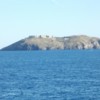
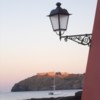
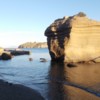
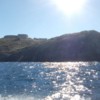
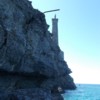
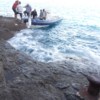
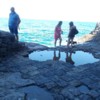
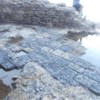
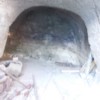
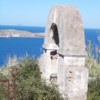
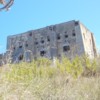
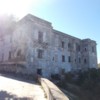
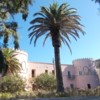
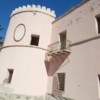
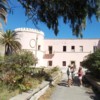
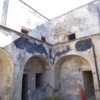
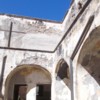
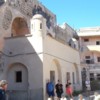
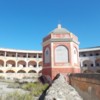
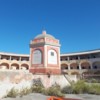
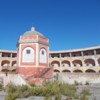
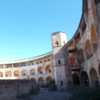
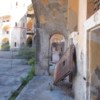
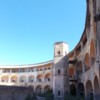
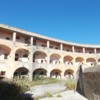
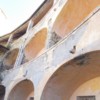
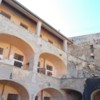
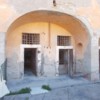
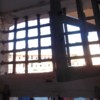
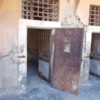
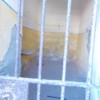
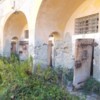
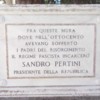
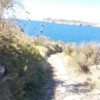

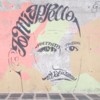
BIBLIOGRAPHY:
-
ALFASSIO GRIMALDI Ugoberto (1970) Il re "buono". Feltrinelli,
Milan, Italy, p. 468-470.
- AMENDOLA Eva Paola (2006) Storia fotografica del Partito
Comunista Italiano. Editori Riuniti, Rome, Italy.
- AJELLO Nello (2003) Il confino. Ecco le vacanze che offriva
il duce. La Repubblica, September, 13th, 2003, p. 39.
- BENTHAM Jeremy (1787) Panopticon, or the Inspection-house.
http://cartome.org/panopticon2.htm
-
BUFFA Pier Vittorio (2017) No volevo morire così. Nutrimenti,
Rome, Italy.
- BUFFA Pier Vittorio (2019) Salviamo il carcere d Santo Stefano.
L'Espresso, October 15th, 2019 link
- DA PASSANO
Mario - Il «delitto di Regina Cœli» (http://www.dirittoestoria.it/4/in-Memoriam/Mario-Da-Passano-e-la-storia-del-diritto-moderno/Da-Passano-Delitto-Regina-Coeli.htm
- DAL PONT Adriano (1975) I lager di Mussolini. La Pietra,
Milan, , Italy..
- DAL PONT Adriano, LEONETTI Alfonso, MAIELLO Pasquale, ZOCCHI
Lino (1962) Aula 4: tutti i processi del Tribunale speciale fascista.
ANPPIA, Rome, Italy.
- FAGGI Vico (a cura di) (1970) Sandro Pertini: sei condanne due
evasioni. Mondadori, Milan, Italy.
- FORBICINI Giovanni (1921) Abolite le carceri. E. Negri
e C., Rome, Italy.
- FUIDORO Innocenzo (1934) Giornali di Napoli dal MDCLX al MDCLXV,
vol I. A cura di Franco Schlitzer. Società Napoleana
di Storia Patria, Naples, Italy.
- GALZERANO Giuseppe (1988) Gaetano Bresci : la vita, l'attentato,
il processo e la morte del regicida anarchico. Galzerano editore
-Atti e memorie del popolo - Casalvelino Scalo (Salerno, Italy.).
Tel/fax: +39.0974.62028 web: http://galzeranoeditore.blogspot.it e-mail: galzeranoeditore@tiscali.it
- GHINI Celso, DAL PONT Adriano (1971) Antifascisti al confino
1926-1943. Editori Riuniti, Rome, Italy.
- GRAGLIA Piero S. () Il penitenziario di Santo Stefano e la rivolta
del novembre 1943. Riflessioni e nuove acquisizioni. p. 75-86.
- LISA Athos (1973) Memorie. In carcere con Gramsci. Feltrinelli,
Milan, Italy.
- LOMBARDO Mario (1974) in "Colloqui coi lettori" -
Storia Illustrata n. 194 - January 1974, p. 6.
- MARANGON Michele (2017) Ex carcere di Santo Stefano, Boschi
e Franceschini inaugurano elisuperficie. Corriere della Sera,
August 2nd, 2017. link
- MARIANI Giuseppe (1954) Nel mondo degli ergastoli, S.n.,
Turin, Italy.
- MOUY (Vicomte de) Roger (1901) La mort de Bresci à Santo-Stefano.
L'illustration, 3041, 8 Juin 1901, p. 371.
- OSSICINI Adriano (1999) Un'isola sul Tevere. Editori Riuniti,
Rome, Italy.
- PARENTE Antonio (1998) Architettura ed archeologia carceraria:
Santo Stefano di Ventotene ed il "Panopticon" .Rassegna
penitenziaria e criminologica, Rome, Italy, Issue 1, 3 : 43-137-
link
- PARENTE Antonio (2008) L’ergastolo in Santo Stefano di
Ventotene. Architettura e pena. Ufficio Studi Dipartimento
Amministrazione Penitenziaria Ministero della Giustizia, Rom,
Italy. link
- PERTINI Sandro (1947) in "Atti dell’Assemblea Costituente.
Discussioni", IX, 19 novembre 1947, p. 2179-2180.
- PUGLIESE Amelia (s.a.) Viaggio nella casa di correzione penale
di Santo Stefano. http://www.ventotenet.org/tourinfo/santostefano.htm e http://www.ecn.org/filiarmonici/santostefano.html.
- ROSSI Ernesto (1981) Miserie e splendori del confino di polizia.
Lettere da Ventotene 1939-1943, a cura di Manlio Magini e con
introduzione di Riccardo Bauer, Feltrinelli, Milan, Italy.
- SANTILLI Anthony (2023) Entre proximité et promiscuité.
Vivre l’enfermement dans les petits espaces insulaires :
le cas des îles de Ventotene et Santo Stefano (1770-1810).
Criminocorpus (on line), 23 | 2023, link
- SETTEMBRINI Luigi (1964) Ricordanze della mia vita. Rizzoli
editore; Milan, Italy.. Liber Liber - Progetto Manuzio
link
- SPEZZANO Francesco (1984) Voce "Pugliese, Rocco" in
"Enciclopedia dell’antifascismo e della Resistenza".
La Pietra-Walk Over, Milan, Italy. IV: 813-814.
- SPRIANO Paolo (1969) Storia del Partito Comunista Italiano.
Einaudi, Turin, Italy.
- TAMIAZZO Stefano (2024) L'ergastolo di Santp Stefabo. Fine pena
mai. Ultims Spiaggia. Genoa-Ventotene, Italy.
- TOURING CLUB ITALIANO (1964) Guida d'Italia - Lazio. Industrie
Grafiche Italiane Stucchi, Milan, Italy.
- TRICOLI Giuseppe (1855) Monografia per le isole del gruppo ponziano.
Stamperia vico S. Marcellino 4, Naples, Italy.
EXHIBITIONS
Isolamenti.
Viaggio tra i documenti di archivio delle isole carcere di Santo
Stefano, Ventotene e Procida in epoca Borbonica (1770-1860). Archivio
di Stato di Napoli, 24 January-22 April 2023.
WEBSITES: (verified on
August 21st, 2024):
Sito www.ventotene.it http://www.ventotene.in/isola/monumenti/carcere.aspx - http://www.ventotene.it/escursioni.aspx
Repubblica di Santo Stefano - Wikipedia (in Italian), http://it.wikipedia.org/wiki/Repubblica_di_Santo_Stefano;
The Ventotene Manifesto, https://www.cvce.eu/en/obj/the_manifesto_of_ventotene_1941-en-316aa96c-e7ff-4b9e-b43a-958e96afbecc.html;
The article of Amelia Pugliese http://www.ecn.org/filiarmonici/santostefano.html
Text of "Ricordanze
della mia vita" by L. Settembrini: http://www.intratext.com/IXT/ITA2618/_PU.HTM
Isola di Santo Stefano - I. Pontine (LT) - Ex carcere di "Stato"
https://www.nauticareport.it/dettnews.php?idx=18&pg=4344
Una nuova
vita per l'isola-carcere di Santo Stefano? 2 Agosto 2017
https://www.touringclub.it/notizie-di-viaggio/una-nuova-vita-per-lisola-carcere-di-santo-stefano
Website on lizards https://www.lacerta.de/AS/Taxon.php?Genus=19&Species=85&Subspecies=191
Websites
no more active or no more reachable (on August 21st, 2024):
Ministry
of Justice, Italy, Criminal Museum in Rome http://www.museocriminologico.it/index.php/documenti2/2-non-categorizzato/76-gaetano-bresci ;
On
Anarchists: http://dwardmac.pitzer.edu/Anarchist_Archives/goldman/
Marcello
Botarelli, photographer http://www.marcellobotarelli.it/santostefano/index.html
Le due città
(The Two Cities), journal of the Jail Department, no. 5 year VIII
May 2007
http://www.leduecitta.com/articolo.asp?idart=1971;
An
article by Giuseppe De Filippis http://www.edificiabbandonati.com/Fotografie/Cartelle/C09-IsolaSSTefano/testo.htm;
Website
on extinct species
http://www.petermaas.nl/extinct/speciesinfo/santostefanolizard.htm
Terre Protette
travel agency and tour operator, Rome, Italy http://www.terreprotette.it/tp2/106;
 page
created: February
20th, 2011 and last updated: March 15th, 2025
page
created: February
20th, 2011 and last updated: March 15th, 2025